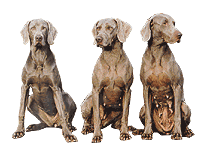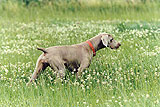| Copyright on all texts & photos/ Droits d'auteur sur toutes les photos & textes |
| Accueil | Contact | Où sommes-nous | We are located | Liens - Links | notre autre site internet sur Chiens de France |
DEPUIS 1997 English translation included |
|
| Présentation | |
| L'Elevage / The Breeding | |
| Nos Races / Our Breeds: Weimar & GK |
|
| Chasse & Entrainements Hunting & Trainings |
|
| Field-Trials | |
| La Pension - Dogs in Holliday | |
| Le Dressage / Pro Training |
Nos Chiens / Our Dogs 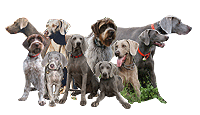 Photos et Infos sur nos chiens Photos et Infos sur nos chiensImages & Infos on our Dogs |
|---|
| Les actus à l'Elevage / Actus of our Breeding 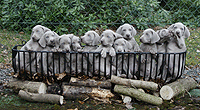 Les portées prévues / forecast litters |
| Les Etalons Reproducteurs / The Studs 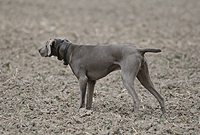 Les étalons proposés pour la reproductions / The studs for reproduction Les étalons proposés pour la reproductions / The studs for reproduction |
| Actualités / Actualities : page régulièrement mise à jour Les Actualités Générales des chiens de l'élevage, les résultats d'Expos et Field-trials |
| Palmares Nos Chiens dans la Presse Our dogs in the Magazines |
|
|||||||||||||||||
| One uses it for hunting for small game such as pheasant, young partridges, duck, woodcock and snipe, the hare and the rabbit but also, for hunting for large game like the fox or the roe-deer. It is also one of the only pointers which can track with blood wounded game, in particular the big games which are the stag and the wild boar. In the thickets, wood, the plain or the marsh, this dog is with its ease. He delightes the hunter which it see work under the rifle and in the same time offers him some spectacle. In the same way, the amateurs of fields trials do not hesitate any more to let him run and win prices. |  |
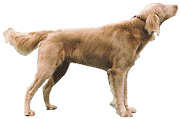 |
Varieties :
There are 2 varieties of Weimaraners : the short hair and the long hair (much rarer, see beside). In spite of a strict selection and distinction between the 2 varieties, it happens sometimes that in a litter of the variety with short hairs, one finds pups with long hairs. |
Characteristics : The great characteristic of the race is the plain color gray-mouse or gray-roe-deer which varies from light to darker according to specimens' and the seasons and periods of moult. A white spot is allowed only on the breast piece. The color of the eyes, blue with the birth, evolves gradually to become yellow-amber at the adulthood. |
|
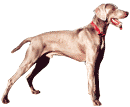 |
It is one of the largest pointers, registered in a square, its framework is robust, its powerful chest, its back is firm, the whole giving an impression of mixed energy and elegance. Its head is expressive and the port of the ears indicate the mood of the moment to you. |  |
To the short hair, the tail is reduced of some vertebrae 3 days after the birth in order to avoid the wounds due to the ronciers and thick thickets in which it takes pleasure to seek rabbits and pheasants.
Growth and evolution :
At birth |
3 month old |
6 month old |
adult male |
adult bitch |
|
Medium weight |
300 to 550 gr |
10 kg |
18 kg |
30 to 40 kg |
25 to 35 kg |
Adult size |
withers : 59 to 70 cm |
withers : 57 to 65 cm |
|||
Age of puberty |
12 to 18 month |
12 to 18 month |
|||
Adulthood |
24 to 36 month |
24 to 36 month |
|||
Minimum Age for reproduction |
18 to 20 month |
min 24 month |
|||
Age of maximal proliferation |
4 year |
4 year |
|||
Medium number puppies pet litter : 6 to 8 Medium lifetime : 13 to 15 years |
|||||
Character of the dog :
 |
It is a dog of outside, rustic, good guardian, very nervous, (the short hair is more nervous than the long hair), sharp, intelligent and sensitive. It does not like loneliness, it is an animal very affectionate, funny, untiring player. He is a worker and excellent hunter: it one is impassioned. He will fill also the very sporting people. |
The consequences of a bad raising are (as in all the dogs) a certain aggressiveness, inopportune barkings, a constant refusal to obey and the blackmail.
Weimaraner : Standard F.C.I Nr 99
|
